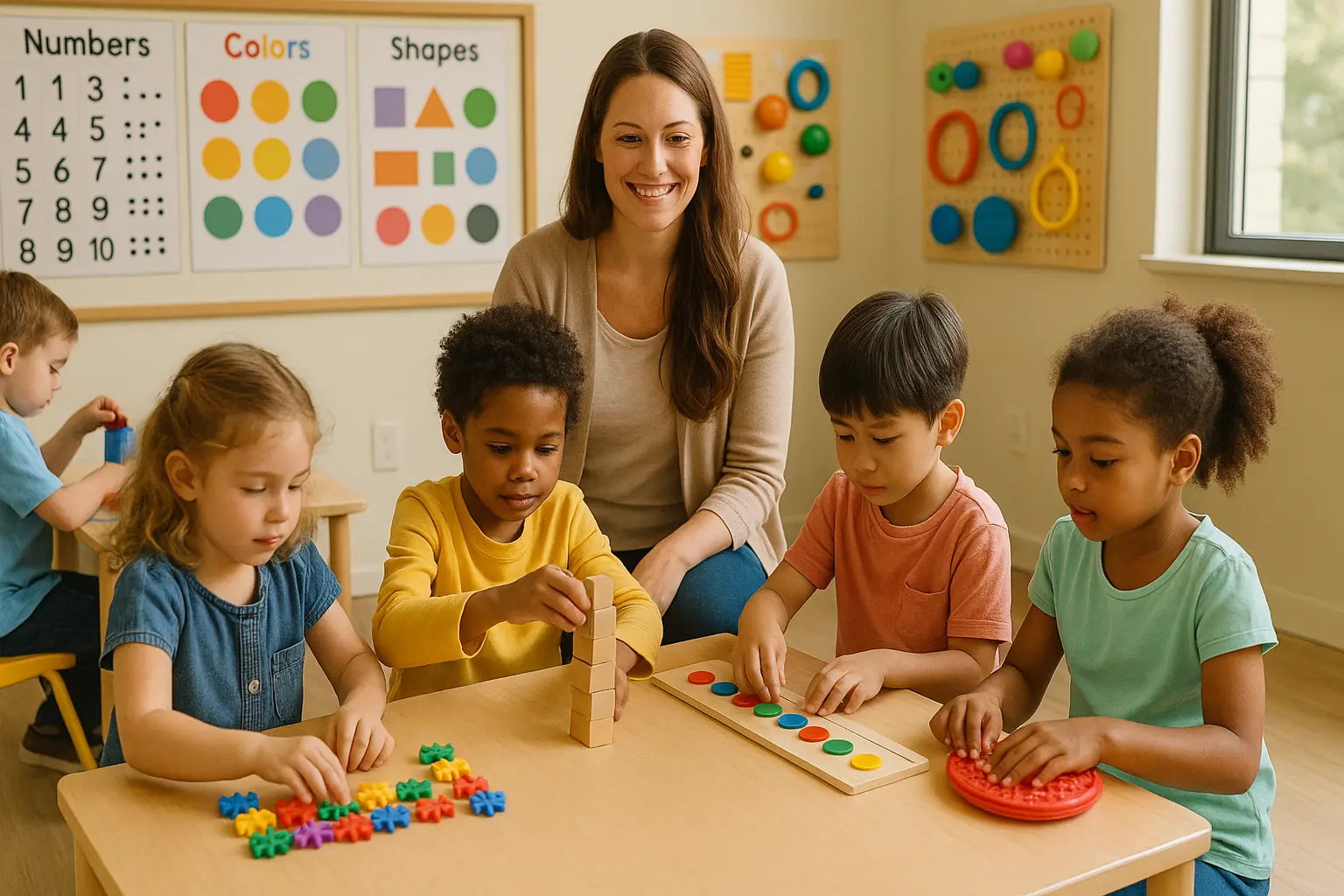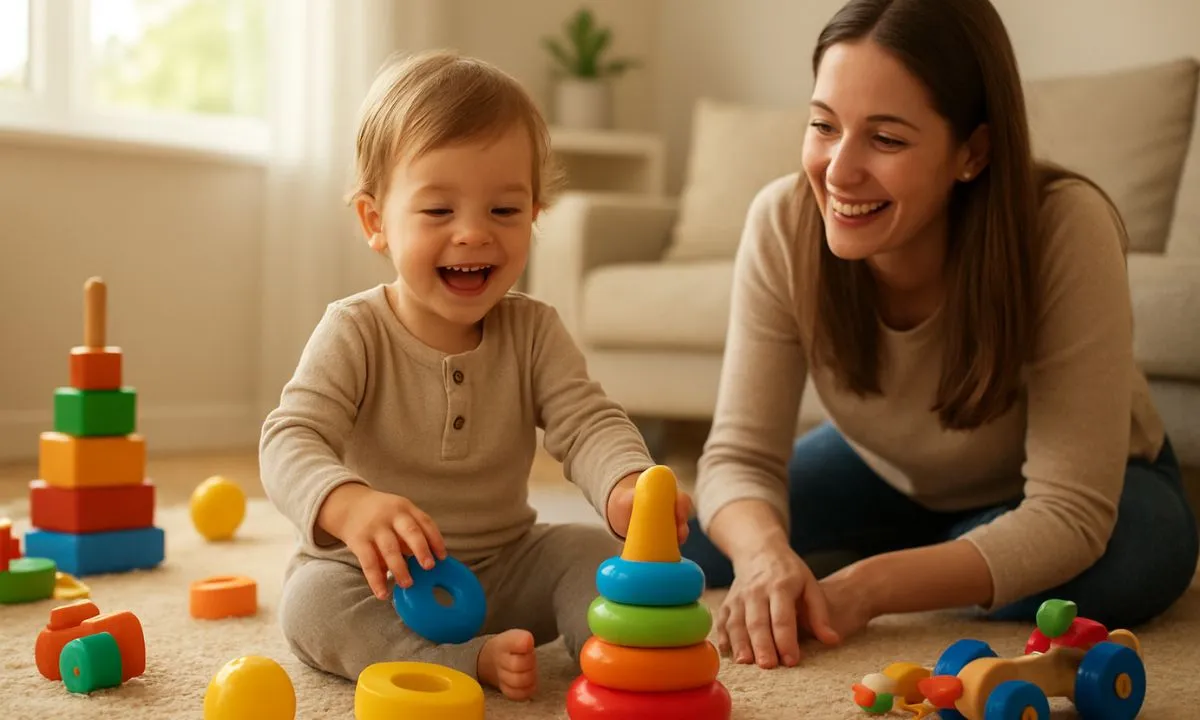Teaching children to manage their impulses is one of the most valuable gifts parents and educators can provide. Impulse control activities for kids serve as building blocks for emotional intelligence, social success, and academic achievement. These skills help children pause before acting, consider consequences, and make thoughtful decisions rather than reactive ones.
Understanding Impulse Control in Children
Children naturally act on immediate desires and feelings. Their developing brains are still forming the neural pathways necessary for self-regulation. Impulse control activities for kids work by strengthening these pathways through repeated practice in fun, engaging ways.
When children struggle with impulse control, they might interrupt conversations, grab toys without asking, have difficulty waiting their turn, or react strongly to disappointment. These behaviors are normal parts of development, but targeted activities can help accelerate the learning process.
10 Proven Impulse Control Activities for Kids
1. Red Light, Green Light Plus

This classic game becomes a powerful tool when modified. Children move freely during the “green light” but must freeze completely during the “red light.” Add “yellow light” for slow motion movement. This activity teaches immediate response control and body awareness.
Make it more challenging by adding emotions: “angry red light” (freeze while showing anger), “happy green light” (move while smiling), or “calm yellow light” (move slowly while taking deep breaths).
2. Mindful Coloring Challenges
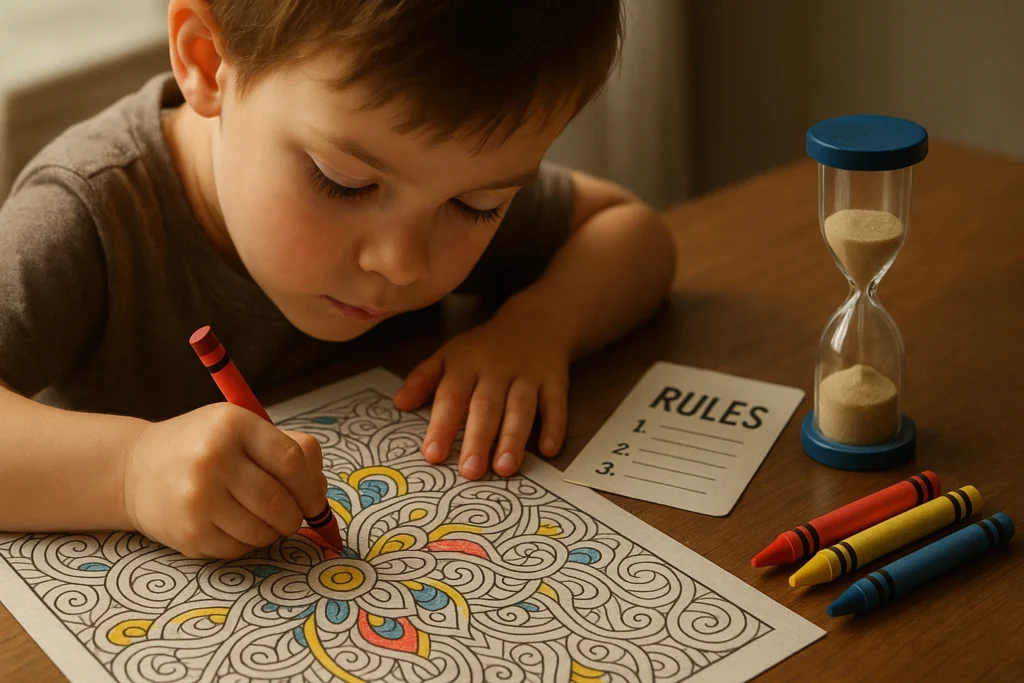
Provide children with detailed artistic projects accompanied by specific guidelines such as completing particular sections first or limiting color choices. These focused activities require patience, strategic thinking, and sustained concentration while remaining engaging and enjoyable.
Implement time-based challenges or establish progression rules like transitioning between materials at regular intervals. This helps children practice discontinuing one task and smoothly beginning another.
3. Mental Reset Technique

Introduce children to an imaginary control mechanism they can activate when experiencing overwhelming feelings or impulsive urges. Practice this concept during peaceful moments initially. When children sense strong emotions emerging, they can activate their mental reset, count deliberately, then choose their response thoughtfully.
Develop physical representations for this reset mechanism – perhaps placing their hand over their heart or touching their temple. Physical actions enhance children’s ability to remember and utilize this technique when necessary.
4. Interactive Narrative Analysis

Read stories together, pausing at critical decision points for characters. Encourage children to discuss appropriate character responses and reasoning. This develops their ability to consider consequences before taking action.
Develop custom stories addressing specific self-regulation scenarios children encounter regularly: desiring another child’s possession, experiencing frustration during competitive activities, or wanting to speak when others are communicating.
5. Emotional Intensity Measurement
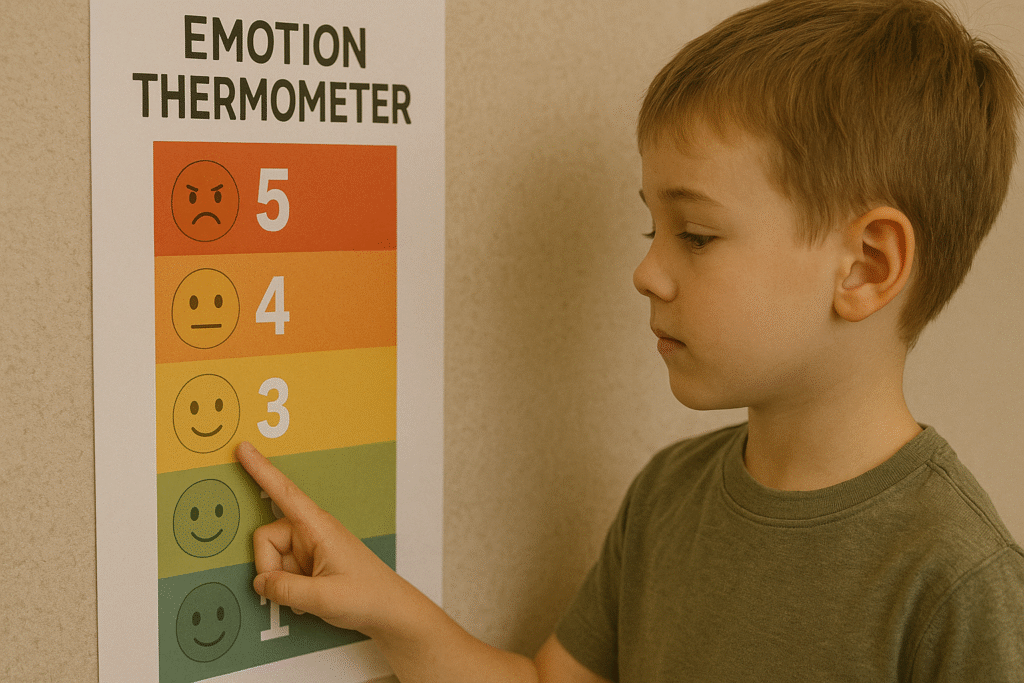
Design a visual measurement tool displaying emotional intensity levels from minimal to maximum. Teach children to identify their current emotional state and apply appropriate strategies for different intensities. Lower levels might require simple breathing exercises, while higher levels may need quiet environments and extended calming activities.
These measurement activities help children recognize emotional escalation before it becomes unmanageable, providing opportunities to implement suitable coping mechanisms.
6. Delayed Gratification Exercises

While famous psychological experiments aren’t suitable for daily application, create similar patience-building activities. Position appealing items or preferred activities within view but temporarily inaccessible, having children wait progressively longer periods before engagement.
Begin with brief intervals and gradually extend duration. Make waiting periods constructive by encouraging children to describe their environment, create stories, or practice controlled breathing.
7. Physical Awareness Journeys

Lead children through exercises where they notice physical sensations of tension or relaxation throughout their bodies. This develops recognition of physical indicators of building impulses or stress.
Create engaging scenarios by imagining their bodies as mechanical systems requiring inspection or fantastical beings exploring their internal experiences. These awareness activities build essential self-monitoring abilities.
8. Choice Analysis Framework
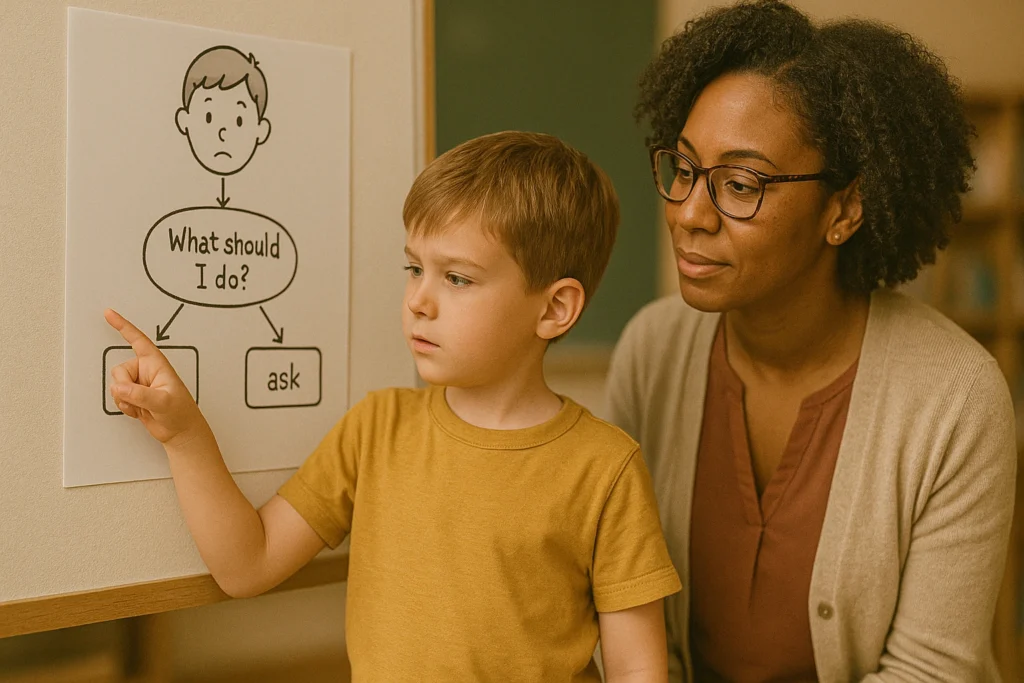
Teach children systematic thinking about decisions using structured analysis. When encountering situations requiring impulse management, they consider: desired actions, potential consequences, and alternative options.
Practice with low-pressure situations initially, such as selecting clothing or choosing recreational activities, before applying to more challenging self-control moments.
9. Designated Calm Space
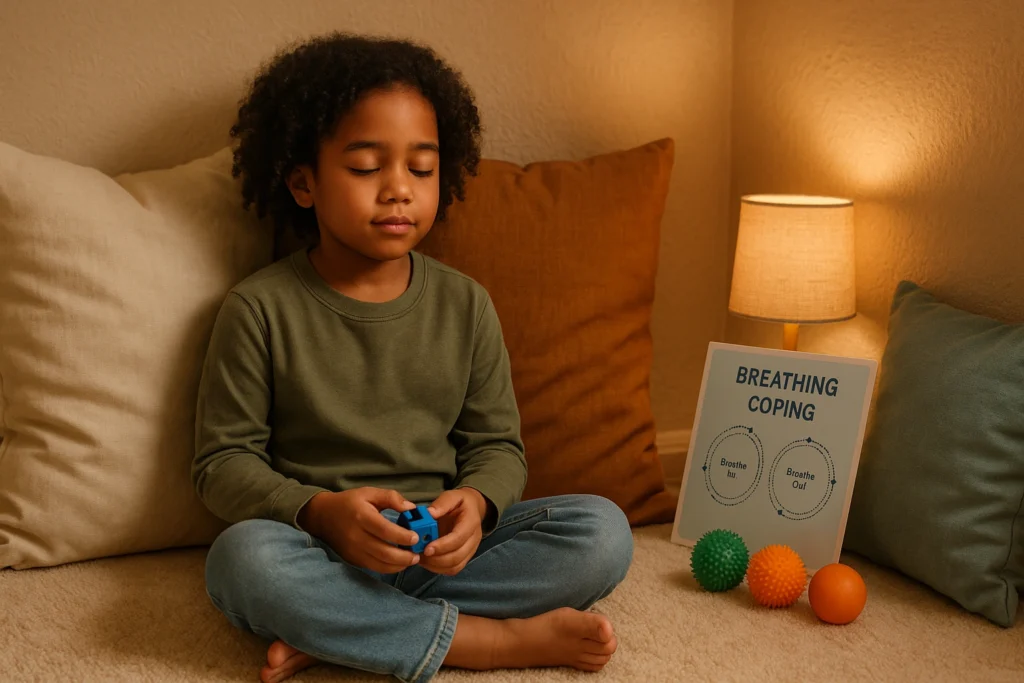
Create a specific area where children can retreat when feeling overwhelmed. Equip it with sensory resources: tactile objects, comfortable textures, soothing audio, or visual aids like breathing instruction guides.
Ensure this space feels inviting and easily accessible. Children should perceive it as beneficial support rather than disciplinary isolation. These self-regulation resources function optimally when children voluntarily choose their use.
10. Synchronized Breathing Practice

Partner children for coordinated breathing exercises. One child demonstrates while their partner matches the breathing rhythm. This activity simultaneously develops concentration, collaboration, and body awareness.
Alternate leadership roles regularly so both children experience directing and following. This teaches attention to others while managing personal responses.
Successful Implementation Approaches
Start with activities that match your child’s current ability level. If they can wait 10 seconds, don’t immediately jump to 60 seconds. Gradual progression builds confidence and success when implementing impulse control activities for kids.
Practice impulse control activities for kids during calm moments, not during meltdowns. These skills need to be learned and practiced when children are regulated before they can be used during challenging times.
Conclusion
Impulse control activities for kids are crucial for nurturing their emotional intelligence, social success, and academic achievement. Engaging strategies like Red Light, Green Light Plus, and Mindful Coloring Challenges help children practice patience and self-regulation in enjoyable ways. Starting with activities matching the child’s ability level and creating supportive environments across various settings are key. Celebrating small improvements and providing consistent support from caregivers and educators are essential for successful implementation. Ultimately, these activities serve as valuable building blocks for kids’ self-management skills and overall well-being.

